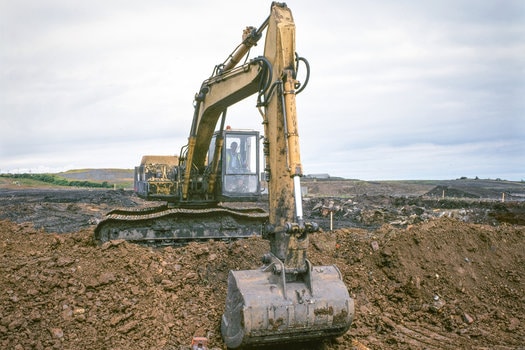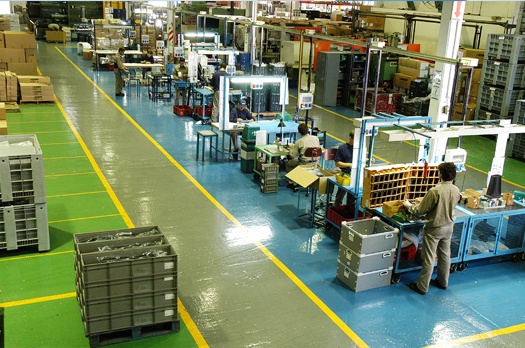Phase III ESA/Remediation Brownfields Assessment
- RSB Environmental is the nation's leader in Phase 3 Remediation, Brownsfield Assessments and Due Diligence services by volume.
- Fast Turnaround and Affordable Phase 3 (ESA) reports by a licensed professional engineer.
- RSB Environmental's Phase III Environmental Site Assessments adhere to industry standards like ASTM E1527-21, ensuring comprehensive site investigations and effective remediation services.
- Quality Phase Three Environmental Site Assessments completed by environmental professionals with a minimum 10-year's experience.
Request a free custom quote or call 1-833-910-2535














Testimonial
WHAT OUR RECENT CLIENTS SAY ABOUT US
Sachin and his team at RSB Environmental are very helpful with our company’s environmental needs. Always courteous and informative in regards to our questions.
RSB Environmental is a great company, they are easy to work with and handle all our Environmental needs in a friendly professional way. I would recommend RSB Environmental for all your company’s environmental needs.
Phase III ESA/Remediation Brownfields Assessment and Voluntary Cleanup Program (VCP)
Brownfields are environmentally impaired and typically abandoned and unutilized property usually found in urban areas. Historically, these properties have been overlooked due to the liability associated with them.
However, with technological advances, risk-based closure strategies, and the location of many properties, redevelopment is becoming a viable option.


Additionally, redevelopment of Brownfields is encouraged by federal, state, and local governments through tax incentive and grants. Most states have Voluntary Cleanup or Voluntary Action Programs (VCPs/VAPs) available.
These programs, which typically involve risk-based closures, expedite remediation and closure of Brownfield properties. We serve our clients with these programs in Houston, Dallas, Austin, San Antonio, and throughout Texas.
Risk-based closures evaluate the types and levels of contaminants in the soil and groundwater with respect to the designated future use of the property. The remedial action plan must reduce the contaminant levels below the designated cleanup levels in order to obtain closure from the regulatory agency. Typically indemnification for the property owner and all subsequent property owners is included as part of the closure.
Soil and Groundwater Remediation
Historical operations frequently result in the contamination of soil and/or groundwater. When this occurs, remediation of the impacted media is often required based on acceptable regulatory levels of the contaminants of concern.
Selection and implementation of an appropriate remedial system is based on a variety of criteria which include: risk-based closures, bioremediation, the location, the extent and degree of contamination, the types of contaminants involved, the type(s) of soils that have been impacted, the depth to groundwater, and the type and location of potential receptors.
Remedial alternatives can range from simple in-situ bioremediation to complex groundwater pump and treatment systems.
Selection and implementation of the appropriate remedial system is imperative not only from a cost to implement standpoint but also from a potential liability perspective as well. RSB professionals have designed, installed, and operated a variety of remedial systems which include: bioremediation, soil vapor extraction, stabilization and solidification, groundwater recovery, and air stripping systems.
Why Choose RSB Environmental For Your Phase 3 Site Assessment?
- RSB Environmental has successfully completed 2000+ Environmental Site Assessments in Texas and nationwide for a variety of clients including lenders, commercial real estate agents, buyers and sellers. Our staff has a combined 30 plus years of experience in all types of Environmental Inspections.
- Phase 3 (ESA) Site Assessments are an important element of due diligence as it can identify and determine if there is a potential environmental condition at the property. Headquartered in Houston, Texas we also have field offices in cities across America.
- All Phase 3 Environmental Site Assessments are completed by experienced staff and licensed, professional engineers with a minimum of 10 years experience. Our prices are affordable and cost-effective because we are a mid-size company without the overhead and expenses of a large company.
- We have the available staff to complete multi-site portfolios nationwide with very short due dates (7-10 business days). We take pride in the fact that we provide quality Phase 3 ESA Reports for less cost than our competitors.
- RSB Environmental is the national leader in Phase III Environmental Site Assessments by volume. All our reports are completed to meet the standards of ASTM E1527-13. We can customize reports to meet individual client or agency lender’s (Fannie Mae, Freddie Mac) requirements while taking the widely varying geology and topography of the region into consideration.
Frequently Asked Questions
What is a Phase III environmental site assessment?
A Phase III ESA is conducted when a release of polluting substances is detected during a Phase II ESA*, and it includes additional testing to determine the extent and magnitude of the release. Once the scope and magnitude of a release are determined, the data is compared to applicable regulatory criteria and other requirements to determine whether remediation of the impacted environmental matrices is indicated.
What is the Difference Between Phase I, Phase II and Phase III Environmental Site Assessments?
Phase I Assessment
Before lending money for the purchase, lease, development, renovation, or demolition of a property, lenders frequently require a Phase I Environmental Site Assessment (ESA). Even if you don’t need a loan, it’s a good idea to conduct a Phase I assessment to avoid potential environmental liability and financial burdens later on. This phase involves research and a site visit to determine if there are any reasons to suspect that hazardous materials could be present.
Phase II Assessment
The Phase II assessment is carried out in response to the issues raised in the Phase I report. It includes limited surface and subsurface soil and water sampling. Soil samples are collected from various depths and analyzed for the presence of hazardous materials.
Phase III Assessment
Phase III assessments include additional intrusive testing as well as a plan to mitigate environmental issues based on the previous assessments’ findings. During this phase, methods such as the installation of ground water monitoring wells will be used to characterize the size and source of the contamination. Furthermore, soil vapor probes may be used on-site to determine if vapor intrusion is occurring within buildings, and indoor air quality testing may be required. This phase entails implementing a mitigation plan, which may include a variety of remediation methods.
Our Registrations and Certifications







Industrial Hygiene

Engineering

Safety

Environmental Compliance




